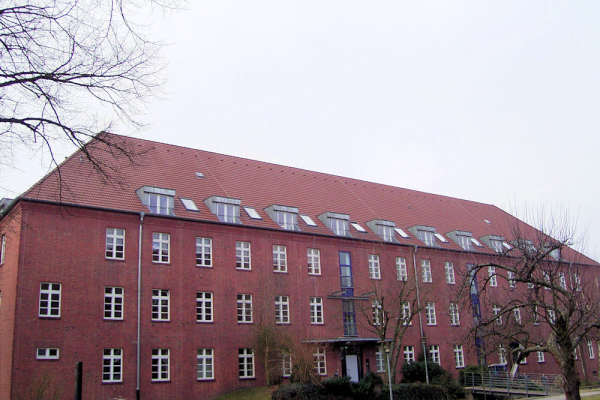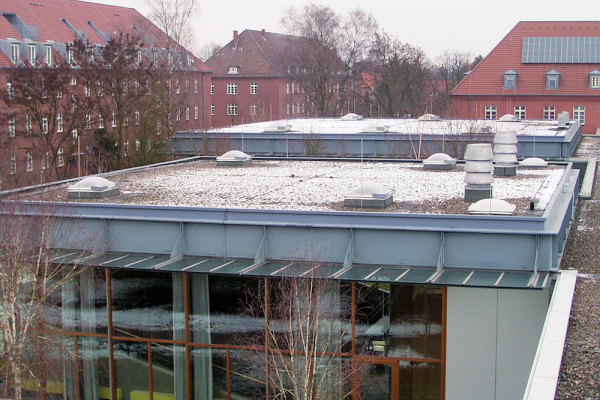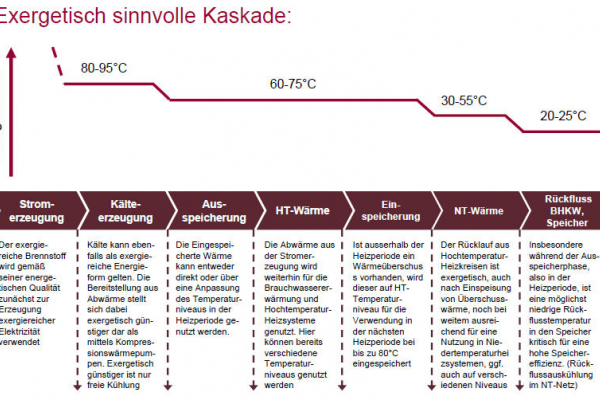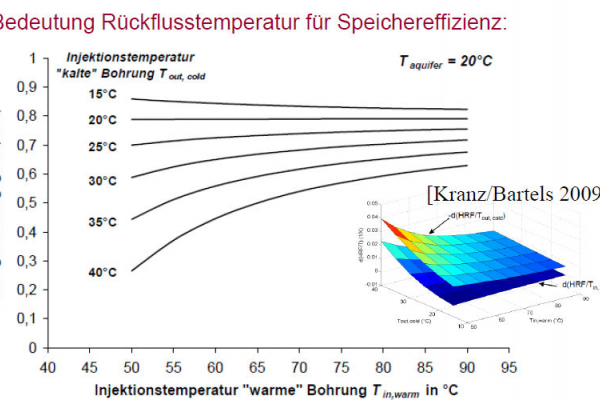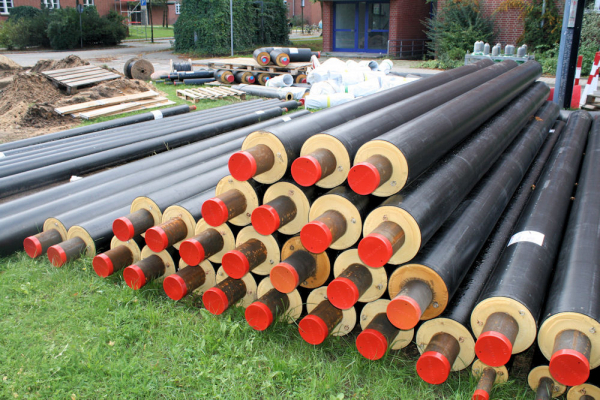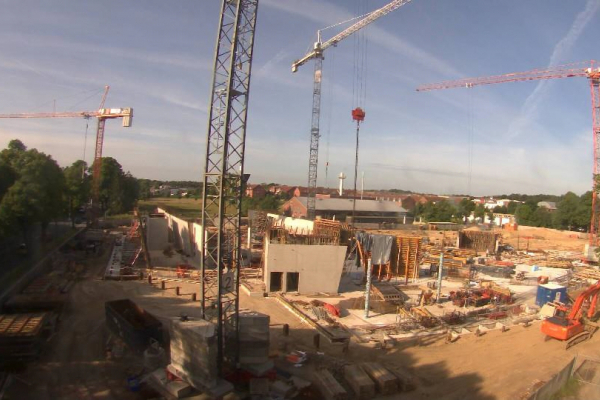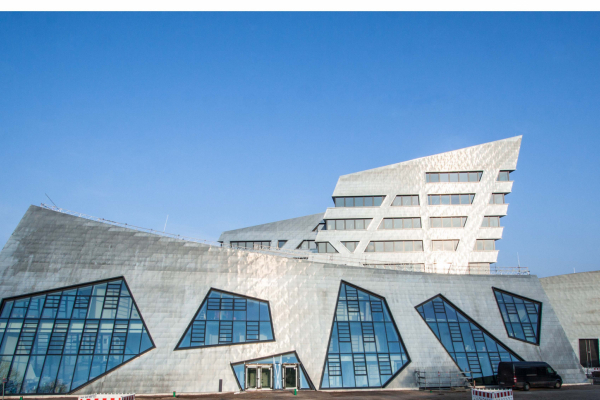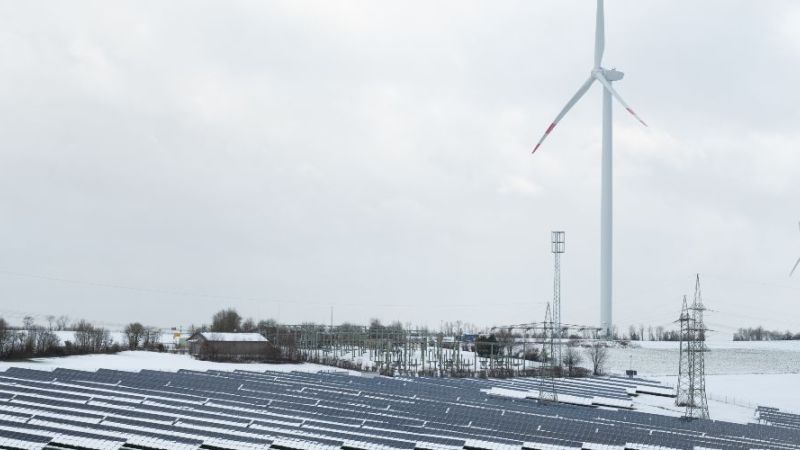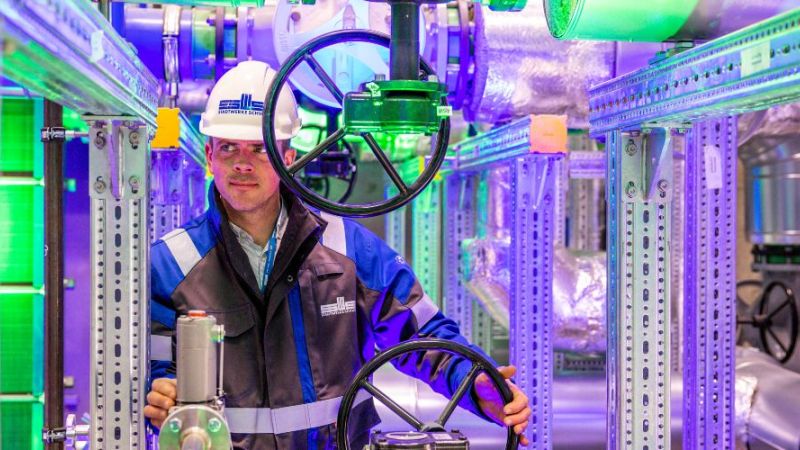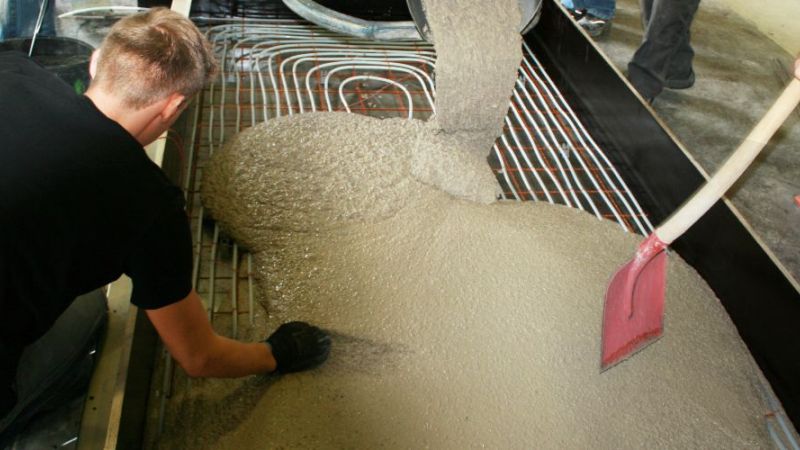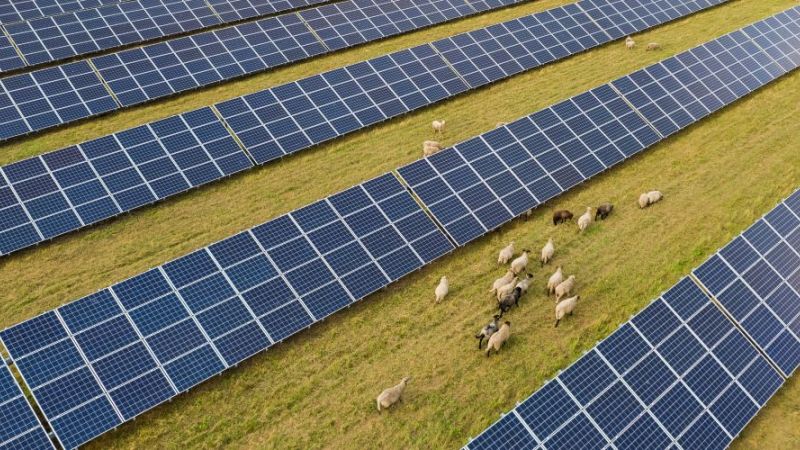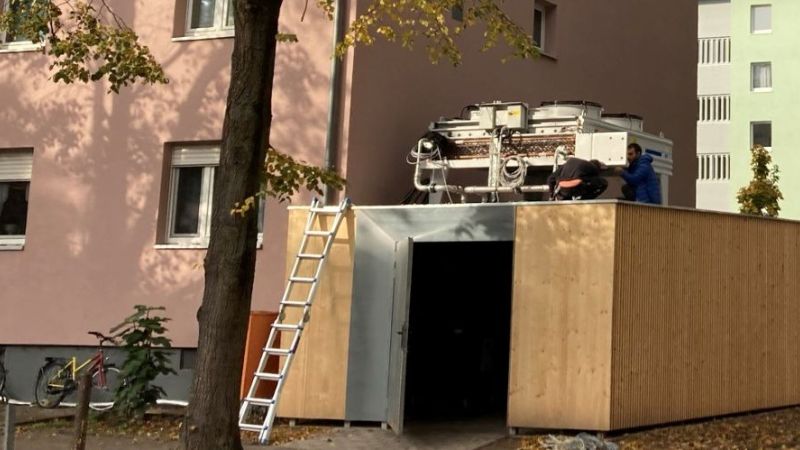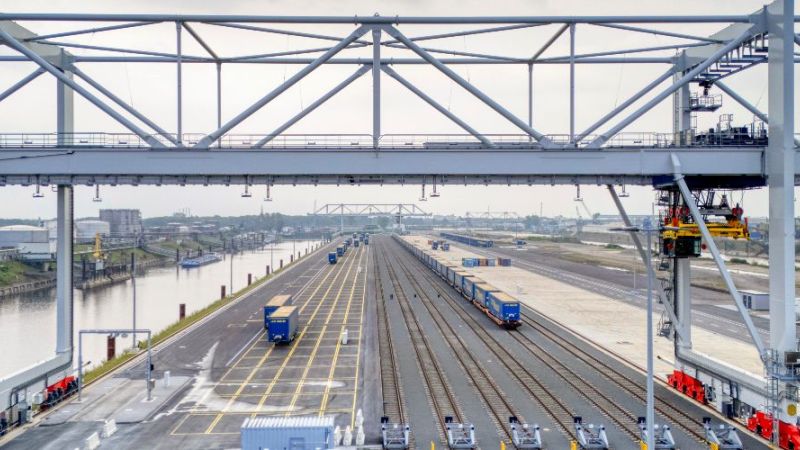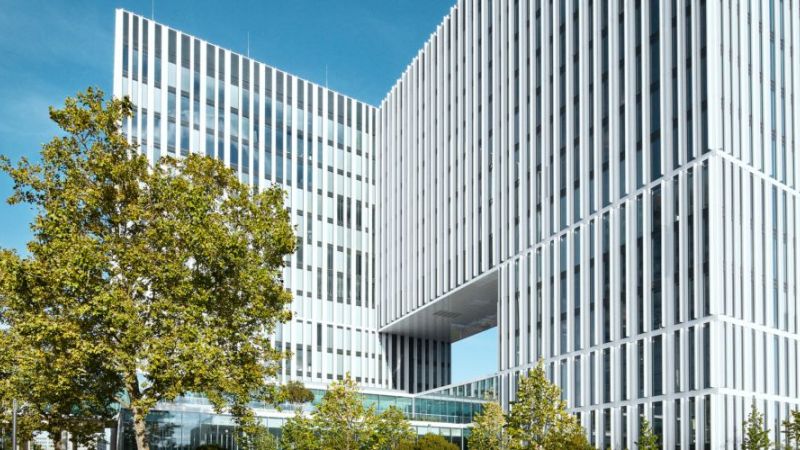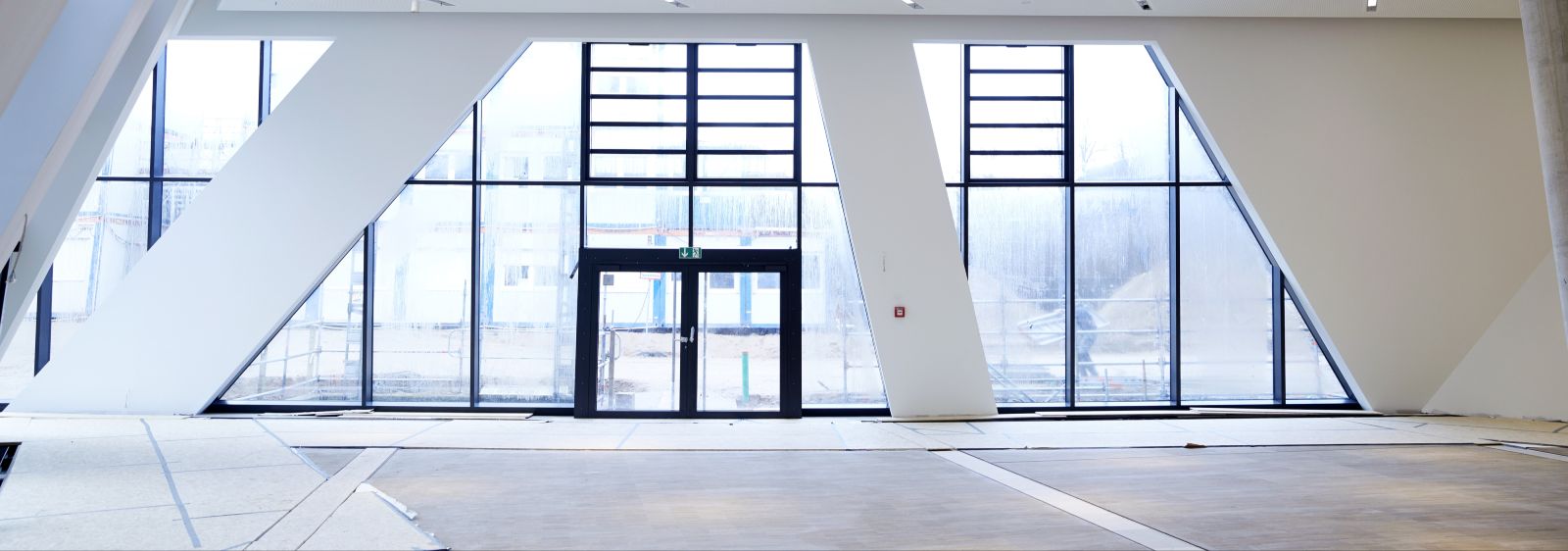 © Leuphana
© Leuphana
Climate-neutral campus
The climate-neutral campus relies on renewable energies and seasonal heat storage
The “Climate-neutral campus Leuphana University Lüneburg” project is developing a sustainable energy concept for the university itself and the adjacent urban district of Bockelsberg. The aim is to supply all the electricity and heat using renewable energies, whereby the interlinking of different technologies to form a functioning overall system is being tested. On 25 November 2016, the project was awarded third place in the German Sustainability Awards competition.
As part of the refurbishment of the barrack buildings, which date back to the 1930s and are used by the university, the heating system will be converted to renewable energy sources and optimised in exergetic terms, whereby the planned energy-efficient new building for the university central building will be incorporated in the energy system. The corresponding concept plans to use cascaded heat and to incorporate a seasonal heat storage tank.
The plan is to further develop Lüneburg’s university campus in the Scharnhorststrasse and Bockelsberg area in terms of both the urban development and energy use. Measures to the existing buildings, the integration of a new building as a central facility for the university and the conversion of the energy supply are being jointly examined. It is planned to convert the energy supply to renewable energy sources and, in so doing, incorporate the low-exergy heating system in the new building as well as seasonal heat storage. The plan is to further develop Lüneburg’s university campus in the Scharnhorststrasse and Bockelsberg area in terms of both the urban development and energy use.
Since the 1990s, the site has been supplied with a local heating system comprising CHP waste heat. This solution was chosen during the redevelopment of the site, which was previously used as army barracks. As part of the refurbishment of the barrack buildings, which date back to the 1930s and are used by the university, the heating system will be converted to renewable energy sources and optimised in exergetic terms, whereby the planned energy-efficient new building for the university central building will be incorporated in the energy system. The corresponding concept plans to use cascaded heat and to incorporate a seasonal heat storage tank.
The entire district is currently supplied with energy via a local heating system, which is supplied with an additional boiler system from a central CHP plant (natural gas-CHP, approx 2 MW of electricity, 3.5 MW of heat). The local heating system for the Bockelsberg area is owned by the Eon-Avacon electricity supplier; a connection is mandatory. The local heating system for the university campus belongs to the Leuphana University of Lüneburg Foundation. The site is supplied with heat by Eon-Avacon, which is the legal successor to HASTRA and is the operator and owner of the heating centre and the Bockelsberg local heating system.
Most of the buildings on the university campus were built for the former barracks and have not undergone any energy-related refurbishment. The barracks on the southern part of the site were replaced with new buildings (apartment buildings) and commercial areas (in accordance with the 3rd German Thermal Insulation Ordinance (WSchV)). During the course of the campus development, the only structural and energy improvement measures to have been conducted since the redevelopment of the site are the conversions of the top floors of the buildings used by the university in accordance with the German Energy Saving Ordinance (EnEV) 2007/2009. Two top floor conversions are still in the planning.
Project objectives
Leuphana University is very much committed to the guiding principle for sustainability: in 2002, it decided to achieve climate neutrality, firstly by buying certificates but in the long-term through its own efforts. The plans for constructing the new central building provided an opportunity to fundamentally reconsider the energy supplies for the campus. In addition to the energy-efficient design of the new-build scheme for the central building and its incorporation into the existing energy system on the campus, it was also decided to optimise this system exergetically and to convert it to using renewable energy sources. In addition, it is also planned to successively refurbish the existing buildings.
The concept intends to use the existing local heating network. However, the energy supplies will be put out to tender again at the beginning of 2014 when the current supply contract runs out and the new central building is completed. Because the Bockelsberg area is physically connected to the existing CHP and heating network, it is intended to integrate this area into the planning. The plan foresees the utilisation of exergetically optimised, cascaded heat by means of the various supply temperatures required in the network. Seasonal heat storage shall also make a contribution, for example in the aquifer. The exergy efficiency and greenhouse gas reduction criteria will be assessed in the tendering process using a point system. It is intended to optimise the energy system in conjunction with an external service provider.
The planning for the central building is mostly completed and it has already received planning permission. The laying of the foundation stone will take place in May 2011 and the building will be built by the university on its own initiative.
Energy concept
The planned expansion of the campus buildings will increase the available usable space by around 25%. It is intended that the overall energy consumption of the Campus property will not increase but will instead be lowered through refurbishing the existing buildings. It is planned to reduce CO2 emissions and the primary energy requirements to zero net or less than zero by means of energy saving measures and by optimising the energy system. For example, refurbishment measures in the existing buildings include replacing windows, installing internal and external thermal insulation, installing insulation on the basement ceiling and upper storeys and in the roof space, as well as optimising the ventilation system (for example in the laboratory building) and the very inefficient cooling system, which is also in the laboratory building. Since it is intended to retain the existing facade with its characteristic brick elevation, this will require the deployment of innovative insulating materials.
By integrating a seasonal thermal storage system, it is intended to maximise the degree of utilisation of the renewable CHP heat or comparably generated heat (e.g. solar thermal). The exergetically sensible, cascaded utilisation of energy is designed to make optimum use of the existing temperature levels.
The planning and construction of the new central building enables a diverse range of innovative measures to be implemented for reducing the energy requirements. These include its flexible and exergetically optimised incorporation into the campus energy system. The following measures are planned:
The use of medium- and low-temperature heating systems with 55°C and 30°C supply temperatures, whereby the thermal load of the individual temperature levels shall be controlled in accordance with the network status.
- Vacuum insulation (glazing and panels)
- Use of phase change materials (PCM)
- Optimised ventilation through using frequency-commutated motors, large cross-sections and the use of raised floors for distributing the air at the storey and room levels.
The use of LED lighting is also planned. Users shall be involved by means of an ambient intelligence system. Such systems are generally aimed at improving the day-to-day lives of users and residents by using networked communications technology such as sensors, wireless modules and computer processors. A typical application field is in “intelligent homes”.
Evaluation
The monitoring is based on a data management concept developed by the E.ON Energy Research Center at RWTH Aachen University. It is capable of combining modelling and monitoring with user involvement and user communication. The measurement data will be partly recorded using the building control technology, whereby the heat volume, electricity consumption, etc, will be determined in accordance with EnOB standards.
In addition, a measurement system from Karlsruhe University will be installed to record comfort data and to evaluate the performance of the vacuum insulation panels. Together with the information obtained from the ambient intelligence system (AmI), this data will be administered in a joint database, where it will be made available for evaluation purposes.
Balancing and optimisation
The aim of the energy concept is to achieve a zero primary energy or energy-plus campus. This will require a precise evaluation of the energy sources deployed, which may have to go beyond standard assumptions. When using biomethane, for example, the electricity generated in the CHP plant – even with 100% CHP utilisation – cannot be offset against other emissions such as those resulting from generating peak load heat, generating electricity from non-renewable energy sources or from mobility uses. This is because for the cogeneration production from biomass, a primary energy factor of zero is assumed in order to avoid negative primary energy factors. However, this does not adequately reflect the reality, which means that individual studies are required.
In addition to the primary energy factors, the CO2-equivalent emissions for achieving the climate neutral goals will also be analysed. This enables an assessment that is much closer to reality. An exergetic evaluation and an exergetically optimised design are ultimately essential for the overall project.
Financing
As a public construction project, the overall project is being predominantly paid for with federal state funding and EU funds as part of the major “Innovations-Incubator-Lüneburg” project. The town of Lüneburg, which will also be using the new central building as an event centre, is also contributing to the costs. Smaller financial contributions have been paid by the Protestant and Catholic Churches for constructing a “Room of Tranquillity”. In addition, innovative aspects relating to the integral planning and energy efficiency are also being subsidised as part of the German Federal Ministry of Economics and Technology’s EnEff:Stadt and EnOB research initiatives. The refurbishment of the local heating system and part of the roof conversions were financed in 2010 through the German government’s Economic Stimulus Package II. As part of a project within the climate protection initiative, the existing buildings were surveyed and four refurbishment variations were roughly calculated. The refurbishment of the existing buildings will be put out to tender and implemented using energy savings contracting.
The project "Climate Neutral Campus" won 3rd place at the German Sustainability Award on 25 November 2016. The research prize is awarded by the Federal Ministry of Education and Research. The prize is awarded to researchers or research teams who develop solutions for the heat transition. Projects were sought that reduce the energy consumption and CO2 emissions of companies, municipalities and private households - from the heat demand to the generation, distribution, storage and use to the recovery of heat. The projects should not have been completed for longer than 24 months.
Project data
| after refurbishment | before reburbishment | unit | |
| Total area with energy requirement (heated main usable area/NFA university) | 52.724 | 37.757 | m² |
| Final energy requirement (heat) | 37,00 | 146,00 | kWh/m²a |
| Final energy requirement (electricity) | 33,00 | 74,00 | kWh/m²a |
| Primary energy requirement (heat) | 102,00 | kWh/m²a | |
| Primary energy requirement (electricity) | 222,00 | kWh/m²a | |
| Further data | |||
| CO2 emissions | 1.700,00 | ||
| CO2 heating (2008) | 413,00 | ||
| CO2 electricity (2008) | 116,00 |
| Investments (cost group 300) | KG 300 31 Mio. € |
| Investments (cost group 400) | KG 400 11 Mio. |
| Planning costs (total) | 22 % |

